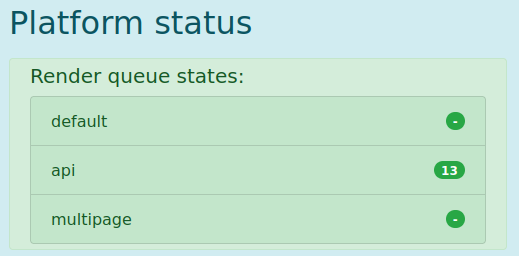Several things that happened after the July server update, but never got mentioned yet:
- map list and detail pages now show the map queue a map job is assigned to, and lists can be filtered by queue
- on file upload you can now choose “delete after render”, and even preserved uploads will eventually be purged after a year max.
- while a map is rendered more detailed status updates than just “rendering” will be shown, giving some insight into rendering progress
- individual rendered files are displayed as soon as they are ready, and not just after all files have completely been generated
- multi colored GPX tracks now also work in the multi page format
- an Umap overlay style regression introduced by the earlier rewrite has been fixed, markers are now shown using correct style information again
- OpenStreetMap Carto default map style has been upgraded from version 5.2.0 to current 5.7.0 release
- as the v5.7 database schema is no loner fully backwards compatible with all the other stiles there are now two planet databases in parallel, one for Openstreetmap cart, and one for all the other styles
- restored the 100m resolution contour lines style

